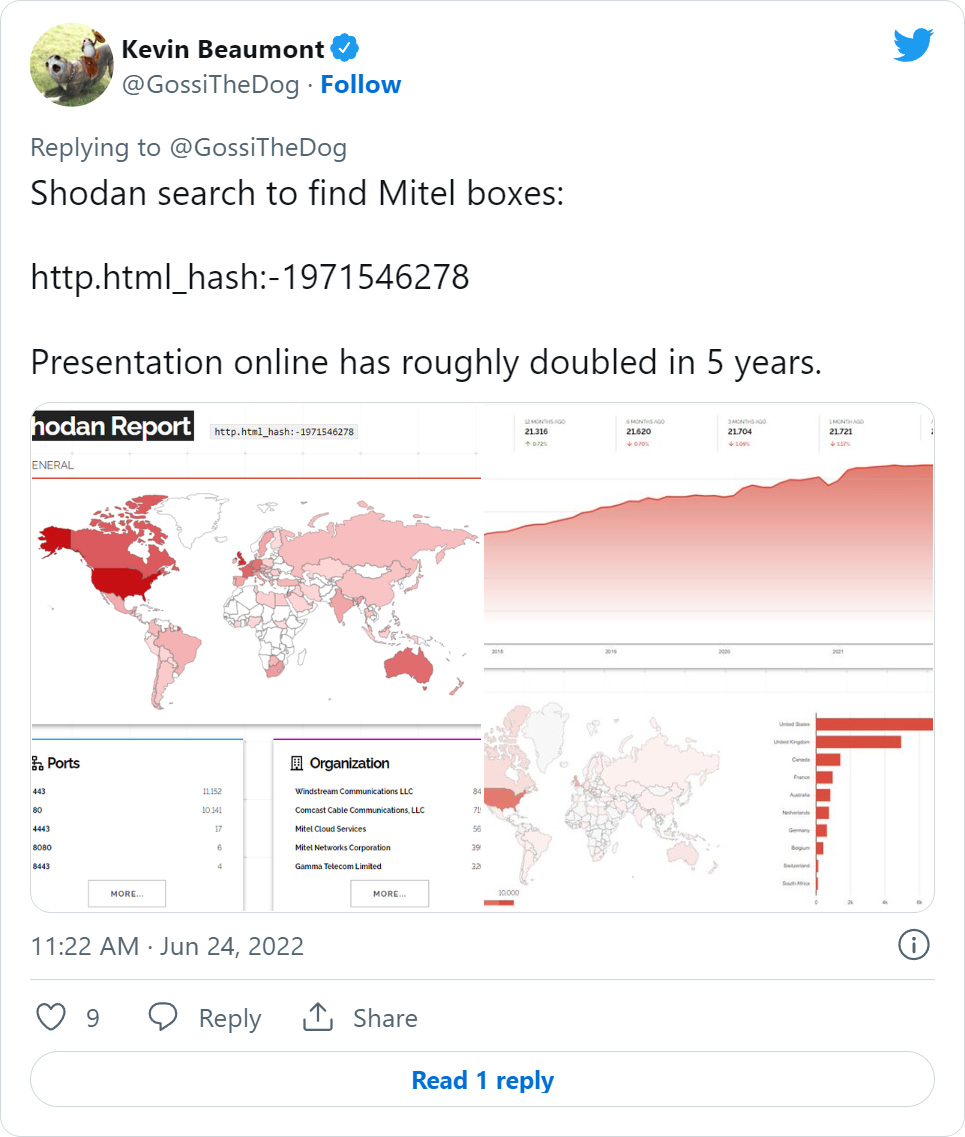Mitel zero-day used by hackers in suspected ransomware attack (BleepingComputer 06/24)
The exploit involves two GET requests, one sent to the device targeting a “get_url” parameter of a PHP file and the second generated on the device itself, causing a command injection that performs HTTP GET requests to the attacker’s infrastructure.
エクスプロイトには2つのGETリクエストが含まれます。1つは
The threat actors used the vulnerability to create a reverse shell by leveraging FIFO pipes on the targeted Mitel device, sending outbound requests from within the compromised network.
脅威者は、この脆弱性を利用して、標的となるMitelデバイス
With the reverse shell established, the intruder created a web shell (pdf_import.php) and downloaded a reverse proxy tool called “Chisel,” to reduce the chances of detection while moving laterally in the network.
リバースシェルを確立した侵入者は、ウェブシェル(pdf_
Crowdstrike also mentions anti-forensic efforts from the threat actor, who attempted to delete all files in the compromised devices using the "dd" overwrite command. However, the analysts could retrieve evidence from the /tmp partition and recover HTTP access logs.
また、クラウドストライクは、脅威者が「dd」
While no official patch has been released, Mitel addressed it on April 19, 2022, by releasing a remediation script for MiVoice Connect versions 19.2 SP3 and earlier and R14.x and earlier.
正式なパッチはリリースされていないが、Mitelは2022年
According to security researcher Kevin Beaumont, there are over 21,000 publicly accessible Mitel devices online, with the majority located in the United States, followed by the United Kingdom.
セキュリティ研究者のKevin Beaumont氏によると、一般にアクセス可能なMitelの
BleepingComputer has contacted CrowdStrike asking why they believe it was a ransomware attack and will update this article with their response.
BleepingComputerはCrowdStrikeに、
overview of cve-2022-29499 (avertium)
The attacker attempted to go undetected by performing anti-forensic techniques on the VoIP appliance - renaming the binary to “memdump”. The device that was observed by Crowdstrike was a Linux-based Mitel VoIP appliance sitting on the network perimeter, where EDR software for the device was highly limited.攻撃者は、VoIPアプライアンスに対してアンチフォレンジック技術を実行し、バイナリを「memdump」 にリネームすることで検知されないようにしようとしました。 クラウドストライクが観測したデバイスは、LinuxベースのM itel VoIP アプライアンスで、ネットワークの境界に置かれており、デバイス用のEDRソフトウェアは非常に制限されていました。
※、EDRで「アクセスを厳密に制限していた」
とは書かれていない。EDRは導入していない機器が多かったとい う事か?と思ってしまった。これは一次情報のクラウドストライク記事を読むと「アベイラブル」という言葉が使われていて、「同様環境で動作可能な対策ソフトは入手も稼働も困難である」と分かる。悩んだ時は一次情報を見よう。


No comments:
Post a Comment